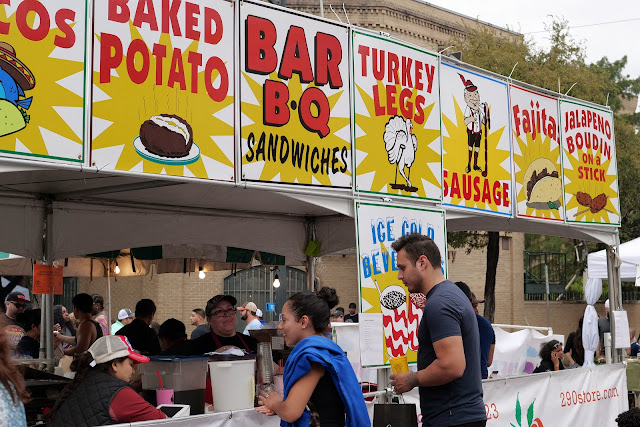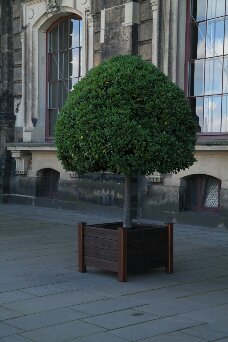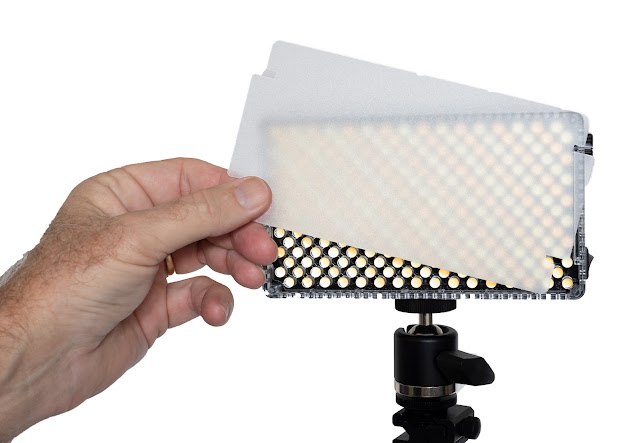From the Samsung Smart Watch Introduction in Berlin, 2013.
The same event at which Samsung's CEO claimed his company
invented the first tablet with handwriting recognition and a pen.
Go back in your time machine and introduce yourself
to the Apple Newton. It would have ruled the tech world if only
the right processors had been available at the time....
I've shot literally hundreds of corporate events and they are all different but the same. The same part is that someone is trying to sell something to their audience. It may be a product, a concept, a new corporate direction or even the need to downsize but they are all aimed at leading attendees to a desired conclusion. In some instances a show might be about teaching better ways to use a software or hardware product but the end desire is to create happier users which should lead to more sales or at least more referrals. What's different at every show is the "look and feel" of each company's culture, the size of their budget --- which determines the production quality and complexity of their show ---- and what exactly they want from their content creators. For our purposes: what do they want from their event photographers and videographers?
Many clients want a small collection of images documenting important moments from their events that can be shared online and used in publications. These might be images of famous keynote speakers, dramatic product demonstrations or flattering images of the CEO and other top company officers speaking on stage while looking smart and honest.
If the client needs well polished images we shoot raw and convert. But these are generally situations in which the clients are not expecting heroic turnaround times; they'll be happy to get the images a few days to a week after the event. If I'm photographing a concentrated collection of images and the image quality is paramount then I shoot in raw format and generally use the highest resolution camera I have, assuming its image quality will be top tier. In any situation that I can't light (most corporate event presentations) I work really hard to get a good custom white balance. Sometimes a quick custom WB isn't enough and you have to dive into the color setting and also fine tune the hues on the blue/yellow and green/magenta axes. If you have time to take a good, portable monitor (Atomos?) or a properly calibrated laptop you can more accurately review color but it's important if you do that to take the monitor out into known lighting in order to properly evaluate a stage scene with lots of gelled or otherwise colored lights.
I shot an event like this recently and the workflow is arduous, especially if you tend to be a promiscuous shooter like me. Since the client expected polished images and does not have an in-house creative team that wants to take the raw images and polish the ones they want to use in-house I have to assume that everything I give them is going to be used and needs to be fine-tuned or corrected in some way so I start the process by editing down the number of images much more tightly that I otherwise would. Then I try to group images that are most alike together so I can do as much batching as possible.
In the past clients asked for Tiffs but now Jpegs are equally acceptable so I tend to deliver Jpegs at the full file size and with the absolute minimum compression. I've never had a client complain about the file type but if they do I'll be happy to convert all raw files to Tiffs provided they show up with an external hard drive to deposit them on. If a designer still requests Tiffs we generally have a discussion about the merits of PhotoShop .PSD files and they generally get the idea that the .PSDs are equally good but more flexible within their Adobe universe. Tiffs can get mighty big for not enough benefit.
The client I worked for this week (three day engagement+post production) has a good, and large in-house media department who are young, smart and love to get their hands in the mix. It was more important to them to get an almost minute-by-minute documentation of their event, with a wide range of speaker expressions and compositions than it was to get ultimate image quality. We still aim for great images, technically, but we shoot them with the idea that they might be used within the hour and with no quarter given for any sort of enhancement. That's another reason to pay close attention to white balance. Much of my work over the last three days was used, literally, SOOC (straight out of camera).
The two cameras I used for the show were the Panasonic GH5 variants; the original and the lower resolution "S" model. In Jpeg I like the standard profile setting in the largest image file size and the lowest compression (finest) for this kind of work. But I find the preset sharpening to be too much and generally tone it down by three steps from the factory setting. I also drop the saturation by one or two clicks as well. With contrasty stage lighting I drop the contrast down by two clicks and also make a custom curve in the shadow/highlights setting menu. One up for shadows (lighter) and one down for highlights (darker).
If I'm shooting Jpegs I am almost always going to be shooting them in an sRGB color profile because that's what works the best on the web and on most computer monitors --- and that's where the images are most likely to be seen. If a client decides to use the file for something else they always have the option of converting the file to their preferred setting.
When I shoot stage productions, speeches, demonstrations, etc. I use a manual exposure setting since stage light can create pools of light and dark that fool camera meters. I try to nail a good facial exposure by either eyeballing (with an assist from Mr. Histogram) or I set zebras and have them trigger at the %+5 I like for flesh tones, seasoning according to complexion.
The video I shot at this show was rudimentary b-roll to duplicate, with motion, the kinds of images I was already shooting of the people presenting. Most presenters love to roam around the stage and it's fine when shooting video. In this situation I'm not supplying any audio other than scratch audio coming off the internal microphones. B-roll is really meant to be used under an announcer bed, or music, and if the client wants beautiful audio there's generally a bigger camera (supplied with an operator by the staging/production company) who is recording the show for posterity ---- and that operator is generally taking sound right off a sound board.
I have been hired from time to time to shoot the stage event in video with sound. Almost every time I get an XLR cable drop to my camera and run it into a mixer via line in/out to camera. With the Panasonics, using the audio adapter, you can set the input to mic or line level and then deliver to the camera exactly which levels it needs.
Miking multiple speakers for stage presentations requires more staff. Someone needs to run a sound board and ride levels across multiple microphones. I hand those situations off to bigger production companies but occasionally I have to record sound for one event speaker. I use two Sennheiser wireless lavaliere microphones and pray the person doesn't thump on their chest like Tarzan or wear burlap shirts that rub against the mics of the cables.... I like to use two mics with two transmitters just in case one frequency has interference that destroys the sound in one mic.
If I have to play at being a news camera man and get video of a single speaker in an "on the street" video interview I have two methods I like to use. The easiest one and, to my mind, the best sounding, is to use a Rode Reporter microphone hardwired to my audio mixer/interface in the camera hot shoe. An omni or uni-direction microphone used close to the subject (think 12-18 inches, max) does a great job of isolating voice and rejecting sounds further away. If I have an assistant or someone actually conducting an interview and we don't want to deal with seeing a reporter microphone in the video frame we default to using a good shotgun microphone. I use an Aputure Diety or a Rode NTG-4+ and have the person holding the microphone get it in as close as possible without showing in the frame. I also have them point it toward the interviewee's mouth. Most fast moving situations aren't conducive to setting up lavaliere microphones. If we are in a dynamic and uncontrollable situations, accoustic-wise, then I buck tradition and take advantage of auto level control and a limiter.
In most event situations, especially when shooting b-roll, we shy away from 4K footage and other video settings that require massive storage. The GH5S has a nice codec in .Mov that gives you 1080p at 30fps with 10 bit, 4:2:2 color space at a modest 100 mbs. Bigger than the older ACVHD files but much, much nicer detail and color. It's footage you'd actually want to use.
I leave all the hocus-pocus of V-Log for people who like to spend lots and lots of time color grading and dealing with LUTs and try to shoot everything for corporate events in Rec 709 which gives good color and fits into most applications well. Even in Rec 709 I think the footage is too sharp and so I'm never squeamish about turning down the sharpening to taste.
If I'm shooting on cameras that take two identical memory cards, and I know I'll be able to get everything in each camera on one card per camera, I do a variation on traditional back-ups. I put in two identical cards (for the last three days each camera has had two 128 V90 SD cards in them) and set them to shoot everything identically on both cards. During the course of the event, since my client is looking for new images on a regular basis, I pull the "A" card, upload the images on it to my computer's hard drive and then upload from there to Smugmug.com and then, when the upload is complete I put the "A" card back in the camera and re-format it for the next round of images. I do this at nearly every break and even sometimes during a long, long presentation. Doing it this way and keeping the "A" card fresh makes uploading the next batch simpler and effectively gives me three levels of back-up: the card in the "B" slot, the hard drive in the laptop and the gallery full of full res images in the cloud.
At the end of a job like this I pull all of the files and put them on a 64GB or larger memory stick and hand them off to the client. Once the client has the files in their hands they have two sources from which to archive; the memory stick or a gallery download from Smugmug.com. Once the client lets me know they are set I erase the files completely from the SSD drive in the laptop and, if it's a client who I know is prone to fumble files I'll make an extra backup on a memory stick to have in the drawer, just in case.
In total I generated about 4,000 photography files in three days and about 60 short (15-30 second) video files. With the lower resolution camera as the main part of the mix, and the use of Jpeg instead of raw files, the entire take fits (just) on a 64GB memory stick. The memory sticks I like to use are Sandisk USB3s and they are currently about $16 each. Not a bad delivery mechanism for bigger jobs. Not bad at all.
Someone asked me about which microphone I use at events and I wanted to reiterate that there are distinct needs and that not one single type is an "all weather" solution. One presenter on stage? Tie into the sound board or use lavaliere microphones. A quick interview in a noisy exhibition space? I'd use a reporter microphone close in to the speaker. A fast moving set of handheld camera interviews in a less noisy space? Maybe a shotgun microphone. But a shotgun is great for outdoor areas where you don't have to worry about sound anomalies caused by bounce wave interference effects. Kinda crazy but no crazier than having the exact lens for every scenario...
Second shooters? Assistants? This show had 400 attendees and was at a very nice hotel. The presentation ballroom was fifty steps from the team room where I did my downloads. Nice waiters in jackets brought coffee to me, sometimes to my shooting location. The pace was never so daunting that, even with so-so time management, I was ever overwhelmed or missed anything.
If the show was bigger, or at a dicier venue (less security/less service), or had break out sessions concurrent with the main tent sessions, then I would definitely consider some help. But the best situation in those circumstances would be to find someone very adept at post processing and file management and to hand off the computer work to them. I know how to do it but it's boring and I'd rather be shooting or meeting with people. If the conference is so big that one needs a real (and talented) second shooter then what one really needs is a team. And then you have to decide if you are an individual artist or an administrator of subcontractors. With all the issues attached to handling people I'd rather keep it simple and turn down the jobs that require more than two of us doing the primary work. Your choices and needs may differ. If I was in poor physical shape I might need more assistance but I'm not slowing down enough to feel any different than I did in my 30's or 40's.
I must say that, once again, I was surprised and pleased by the performance of the GH5 series cameras. Low (enough) noise and high sharpness, combined with very pleasing color, even under challenging circumstances. A nice camera system. I'm more interested still in adding a G9. We'll see what kinds of jobs are on tap for October....... my birthday is coming up....
Note from watching yesterday's Senate hearings: It's a good idea not to drink until you pass out...
hard to remember stuff clearly when one is minimally conscious/conscience.












































